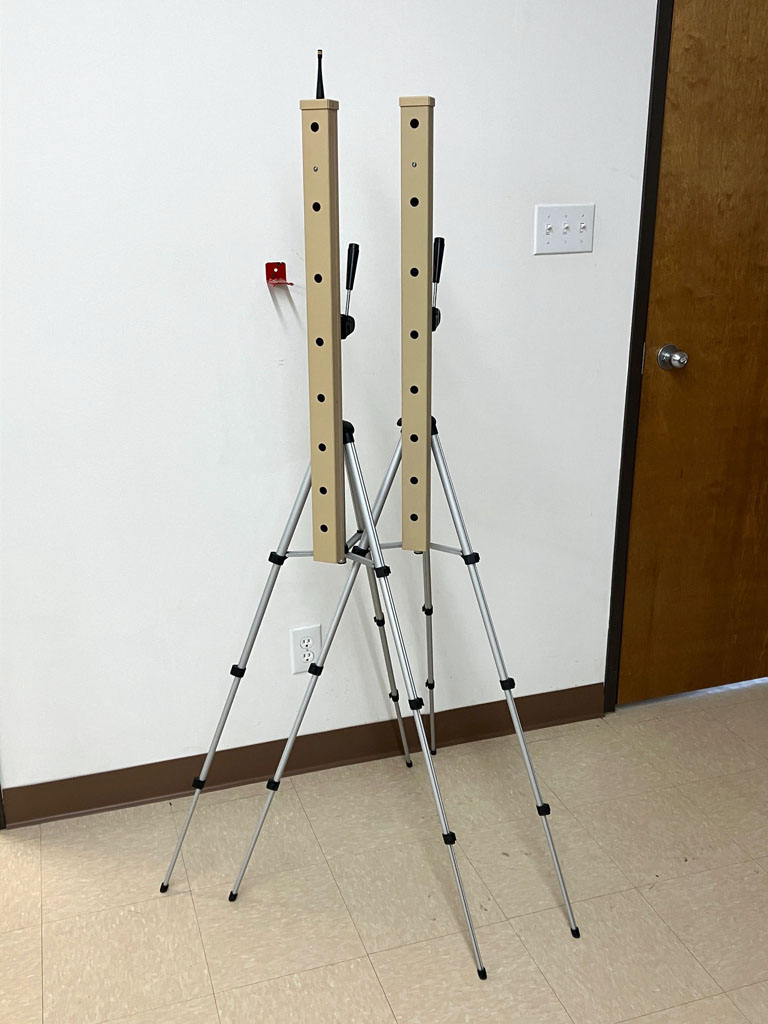There has been significant discussion recently about using the nose of the horse as the timing point for barrel racing. The goal, of course, is to improve the fairness of timing for all contestants. However, movement of the horse’s
nose relative to its actual position on course (i.e., its body) is several times larger than movement of the horse’s chest. Because of this, timing off nose results in a larger random time
variance for most riders versus timing with a single a single beam across the chest of the horse.
Consider two riders who have run a completely identical race. The position of the two horses – from their shoulders to their rump – is identical at all times throughout the race. At the finish, an exact tie on the timer is expected.
In reality, however, it is unlikely the timer shows an exact tie. Why? Because the timer is triggered by a front extremity of the horse. This front extremity, in turn, moves forward and back, up and down – all as a natural part
of the horses stride – not as a function of the horse’s position on course. This results in a random time variance that is added or subtracted from every rider’s time that has nothing to do with horse’s actual position on course
or the quality of the run.
The goal should be to reduce this random timing variance to a minimum. This, in turn, maximizes the fairness of the timing. The best solution to this problem is to trigger timing off a point on the horse that moves the least during
its stride. For any light beam system, that point is the chest of the horse – ideally above leg motion and below head motion. Note that the head and nose of a horse move much more than the chest – and often quite differently between
horses as compared to the chest. Timing off the nose results in random timing variances that are several times larger than timing off the chest. This results in timing that is less fair than
timing from the chest – not more fair.
In addition to making the timing less fair, a move to timing off the nose would require clubs and producers to purchase new timing systems to meet the new requirement. This is for a timing system they would not otherwise have to
purchase were it not for the change, and unfortunately, that new system costs 3-4 times more than the current designs.
Why Does FarmTek Care?
To break on the nose of the horse, a “light curtain” is used. FarmTek has had light curtain sensors in its product line for over 20 years. The light curtains are used for timing venues where the light curtain improves timing fairness
– in dog agility events, for example, where the dramatic difference in dog sizes and shapes make it impossible to use a single beam. FarmTek can certainly adapt one of its light curtain designs for barrel racing – and has considered
doing so in the past. However, we have chosen not to because it does not benefit the sport in a manner that justifies the cost.
Ironically, FarmTek stands to make far more money if the sport does move to timing off the nose. We will sell many new timing systems to replace ones that weren’t otherwise ready to be replaced.
In addition, each system will bring in twice the revenue of the current designs – the change would be very financially beneficial for FarmTek. Despite this, FarmTek still recommends against a move to timing off the nose.

Additional Details to Think About...
As described above, for the substantial majority of riders, a single beam in the chest results in less random time variance than triggering off the nose. The exception to this is when the nose of the horse breaks the single beam at
only the start or only the finish. In this case, the time variance is larger with a single beam than timing off the nose.
So with a single beam system, you can have a small random time variance for 90% of the riders and
a larger variance for 10% of the riders, or by timing off the nose, have a medium sized time variance for all riders. Take your pick – but it’s essentially six of one and a half-dozen of the other. Is it worth purchasing a new
timing system you’d otherwise not need – and spending four times the price – for what amounts to an even trade in timing accuracy?
Consider also that one of the current “trigger on the nose” designs – which operates at a fixed height – can exhibit the very same "large variance" problem as the single beam system when used on arena floors that are domed for drainage
(very common). In this case, the top beam of the sensor can easily hit the horse 12 inches lower than designed/expected. Horses that carry their head high can have their nose caught by the top beam at only the start or only the
finish and cause the exact same larger time variance that is possible with a single beam system.